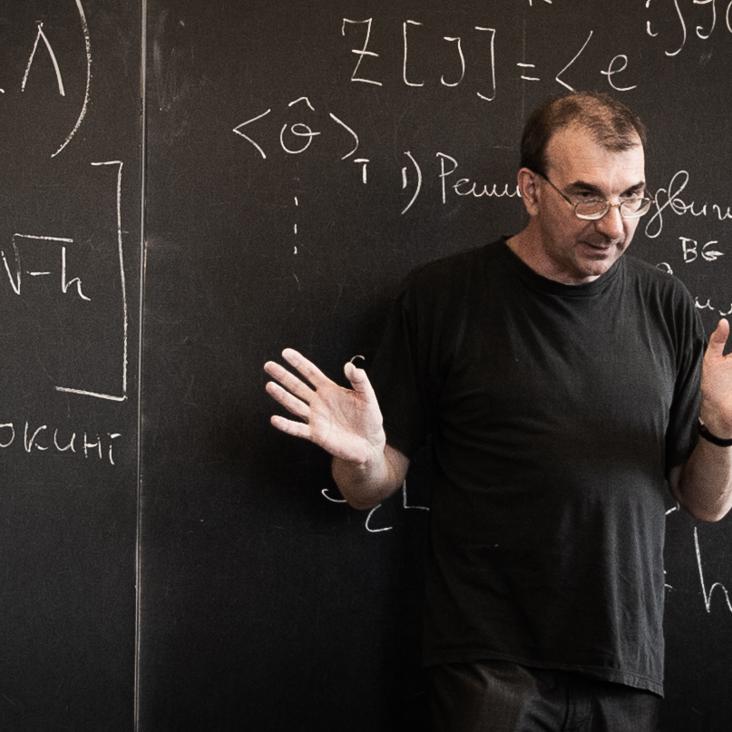On the convergence of the gradient expansion in hydrodynamics
(2019)
Adding new branches to the "Christmas tree" of the quasinormal spectrum of black branes
(2018)
Transport peak in thermal spectral function of ${\cal N}=4$ supersymmetric Yang-Mills plasma at intermediate coupling
Physical Review Letters American Physical Society (2018)
Abstract:
We study the structure of thermal spectral function of the stress-energy tensor in ${\cal N}=4$ supersymmetric Yang-Mills theory at intermediate 't Hooft coupling and infinite number of colors. In gauge-string duality, this analysis reduces to the study of classical bulk supergravity with higher-derivative corrections, which correspond to (inverse) coupling corrections on the gauge theory side. We extrapolate the analysis of perturbative leading-order corrections to intermediate coupling by non-perturbatively solving the equations of motion of metric fluctuations dual to the stress-energy tensor at zero spatial momentum. We observe the emergence of a separation of scales in the analytic structure of the thermal correlator associated with two types of characteristic relaxation modes. As a consequence of this separation, the associated spectral function exhibits a narrow structure in the small frequency region which controls the dynamics of transport in the theory and may be described as a transport peak typically found in perturbative, weakly interacting thermal field theories. We compare our results with generic expectations drawn from perturbation theory, where such a structure emerges as a consequence of the existence of quasiparticles.Transport peak in thermal spectral function of ${\cal N}=4$ supersymmetric Yang-Mills plasma at intermediate coupling
(2018)
Second-order transport, quasinormal modes and zero-viscosity limit in the Gauss-Bonnet holographic fluid
Journal of High Energy Physics Springer Berlin Heidelberg 2017:3 (2017) 166


